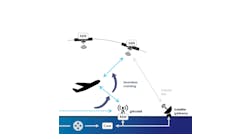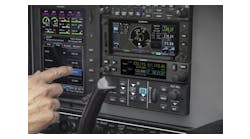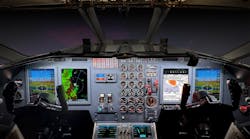EAST AURORA, N.Y., July 18, 2016 - Astronics Corporation (NASDAQ: ATRO), through its wholly-owned subsidiary Astronics Max-Viz, has established special lower prices for its two newest Enhanced Vision Systems, designed for experimental and homebuilt aircraft. The special prices will be offered online and at EAA AirVenture, held July 25-31 at Oshkosh, Wisc., where Astronics will be located at Booth #3077.
"Special EAA pricing will help us introduce our two new Enhanced Vision Systems to experimental and homebuilt aircraft pilots during the largest gathering of adventurous aviators in the world," said Astronics Max-Viz Executive Vice President Elliott Troutman. "This reduced introductory pricing will be available for a limited time and more information is available by stopping by Astronics Booth #3077 or going online to www.max-viz.com."
The new Max-Viz X1+HR (high resolution) system will normally be offered at $18,000, and is available at the introductory price of $16,800 during EAA. The Max-Viz X1 EVS, recently introduced at $6,000, will be $5,700 during the event.
The X1+HR sensor uses a 640x480 pixel resolution long wave infrared thermal imager with electronic zoom to assist pilots of experimental and home- built aircraft, which often operate from unimproved airstrips with wildlife and other obstacles. It is compatible with any display that accepts NTSC or PAL/Analog RS-170 signals.
The Astronics Max-Viz X1+HR EVS is similar to the recently introduced X1 EVS while also providing top end features in terms of the quality and resolution of the image presented. It is a big step up for experimental and home builders looking for a sophisticated system that adds a tremendous safety component to their flying adventures.
Both lightweight systems allow pilots to see temporary obstructions, such as wildlife and construction barriers, which may not be visible and which are not in any synthetic vision database. They enhance safety for the experimental pilot community by enabling pilots to see up to 10 times further than unaided human vision in visibility-obscured conditions, such as smoke, haze and light fog, in daytime or nighttime. Both systems are uncertified for experimental flying enthusiasts.
For more information, go to max-viz.com
.




